What is the state of human capital in the MENA region?
Countries in the Middle East and North Africa (MENA) have made good progress in improving human capital over the past decade. And yet a child born in MENA today can expect to achieve (on average) only 57 percent of her future productivity. On top of that, the COVID-19 crisis poses significant risks to hard-earned improvements in human capital in MENA. We can—and should—do much more to preserve and improve human capital in the MENA region.
The World Bank recently released the Human Capital Index 2020 (HCI). This update covers 174 countries—17 more than when the index was first launched in 2018. Not surprisingly, the HCI scores among MENA countries vary widely from 0.67 in the United Arab Emirates (UAE) to 0.37 in Yemen. Countries affected by conflict, such as Iraq and Yemen, score low on the index, which poses an important question on how to support the protection and enhancement of human capital even in the midst of conflict.
Looking at the 10-year trend, the HCI improved in 11 out of 14 MENA countries (with available data). Morocco, Oman, and the UAE registered the largest gains in the HCI during this period. School enrollment—at the preprimary and secondary levels—as well as harmonized test scores and adult survival, are the main drivers of the region’s HCI improvements. During this period, girls surpassed boys in educational attainment. On the other hand, enrollment declines in primary and lower-secondary school outweighed gains in other components of HCI for Kuwait, Tunisia, and Jordan.
Figure 1. Change in HCI 2020 and HCI 2020 in MENA countries
Source: World Bank. 2020. The Human Capital Index 2020 Update: Human Capital in the Time of COVID-19.
Note: Arrows indicate a decline in the HCI between 2010 and 2020. Data unavailable for Yemen, Iraq, Lebanon, and West Bank and Gaza for HCI 2010. See World Bank’s list of countries/economies by region.
What’s new in the Human Capital Index 2020?
The HCI 2020 update introduces the Utilization-Adjusted Human Capital Index (UHCI). This is quite relevant in several MENA countries since there is a large gap between human capital and labor market outcomes. The utilization of human capital accounts for the fact that when today’s child becomes a future worker, she may not be able to find a job (Basic UHCI). And even if she can, it might not be a job where she can fully use her skills and cognitive abilities in better employment that increases her productivity (Full UHCI). When adjusting for the proportion of the working-age population who are employed, MENA’s HCI value declines by at least one-third—from 0.57 to 0.32 (Basic UHCI) and 0.38 (Full UHCI). Low female labor force participation rates in MENA countries are a key factor for the region’s low Utilization-Adjusted HCI.
Figure 2. The average MENA HCI value declines by more than a third when accounting for the proportion of the working-age population who are employed.
Source: World Bank. 2020. The Human Capital Index 2020 Update: Human Capital in the Time of COVID-19.
Risks to hard-earned human capital
COVID-19 has cascaded into education shocks and the worst economic recession since World War II. At the height of the pandemic, almost 84 million children were out of school in MENA, and now countries that started to open schools are now reconsidering their decision due to the second wave. This could result in the loss of 0.6 years of schooling (adjusted for quality). Nevertheless, some MENA countries took early actions and adopted innovative measures to continue education. In Jordan, for example, the private sector and education officials collaborated to develop an education portal and dedicated TV channels for virtual lectures in Arabic, English, math, and science for grades one through 12. And Saudi Arabia’s universities achieved unprecedented results as more than 1.2 million users attended over 7,600 virtual classes, totaling 107,000 learning hours.
The HCI 2020 update uses data gathered as of March 2020—prior to the COVID-19 pandemic. It serves as a baseline for policymakers to track changes in human capital and inform policies to protect and invest in people through the pandemic and beyond. Previous pandemics and crises taught us that their effects are not only felt by those directly impacted, but often ripple across populations and, in many cases, across generations. COVID-19 is no exception. As a result, the region can—and must—build on its human capital progress amid the turmoil in three key ways.
First, the MENA region needs to continue building its human capital even during the pandemic or conflict. Crisis response measures that emerged out of necessity—such as distance learning and telemedicine—present new opportunities for building back better and differently the “new normal.”
Second, many countries in MENA have shown their sharp focus on protecting human capital by ramping up cash transfers and strengthening social safety nets since the onset of the pandemic. However, stronger efforts are still needed to preserve the human capital of internally displaced persons and refugees and to foster social inclusion for economic mobility.
Third, utilizing human capital is important to the immediate recovery and long-term development of MENA—the region with the highest youth unemployment in the world at more than 25 percent. Utilizing human capital requires job-focused policies as concerns about the future of work grow louder.
The HCI 2020 update shows that many MENA countries have made meaningful human capital progress over the past 10 years. As the pandemic threatens these precious gains, investment in human capital is more important than ever. Governments in MENA have launched promising initiatives that will help to build a better future. When today’s children in MENA become adults, hopefully they will see how their region of the world turned the unprecedented crisis in 2020 into an opportunity to build stronger human capital.


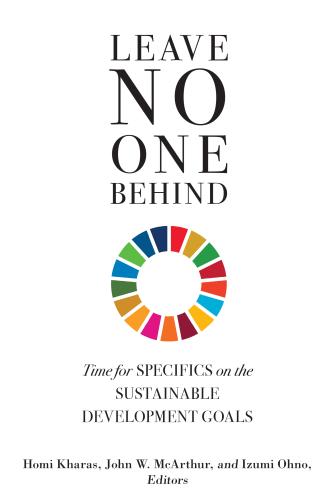
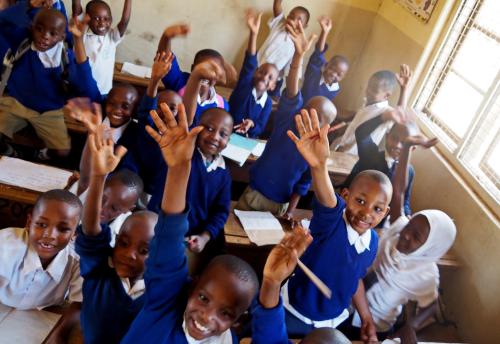
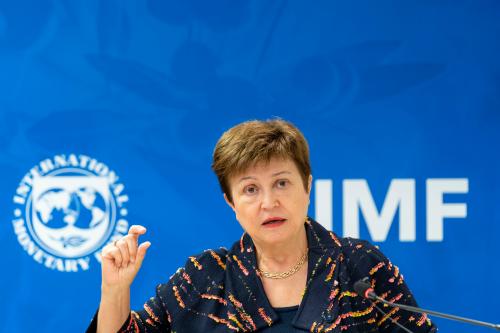
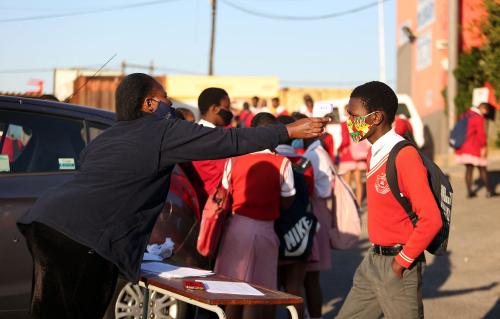
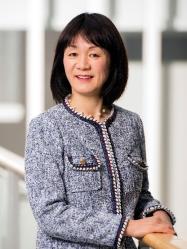



Commentary
Investing in human capital in the Middle East and North Africa is more important than ever
October 19, 2020